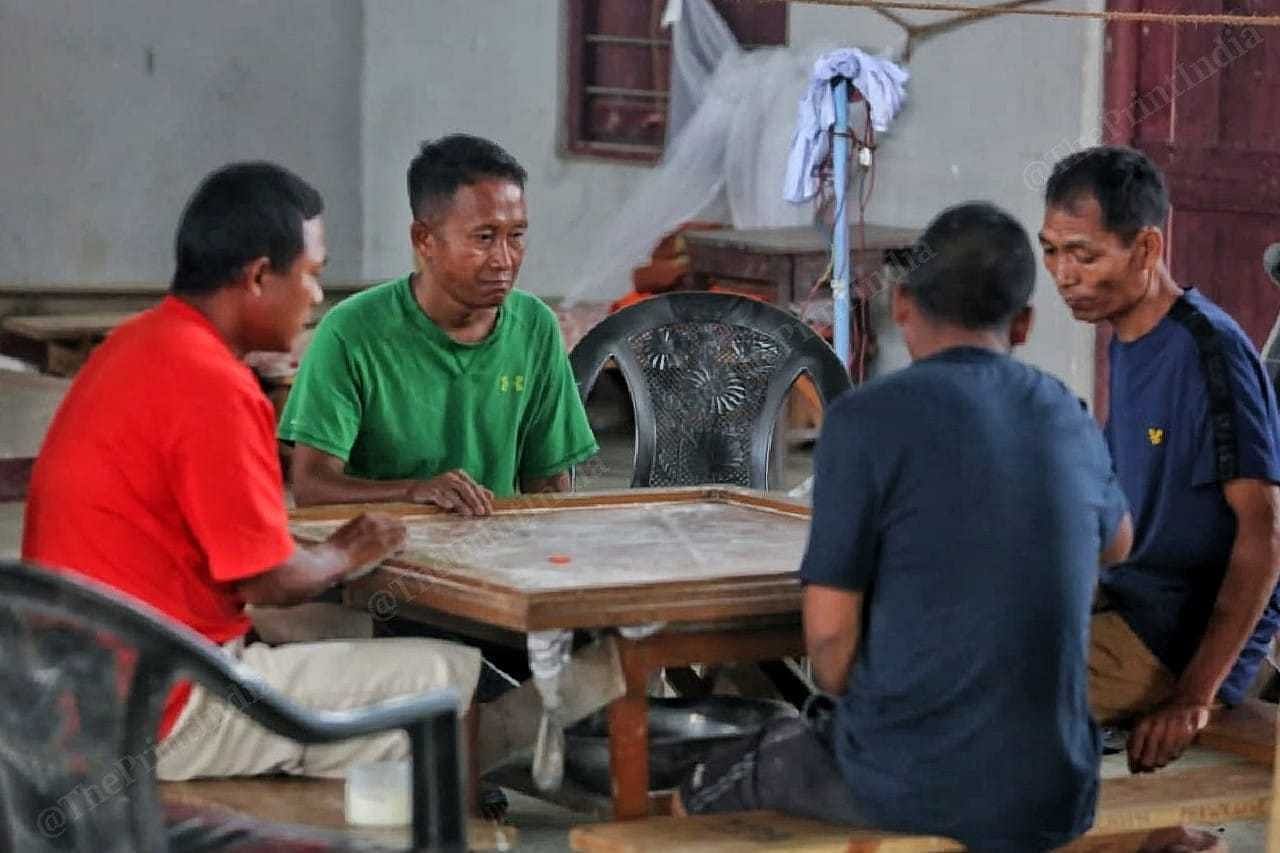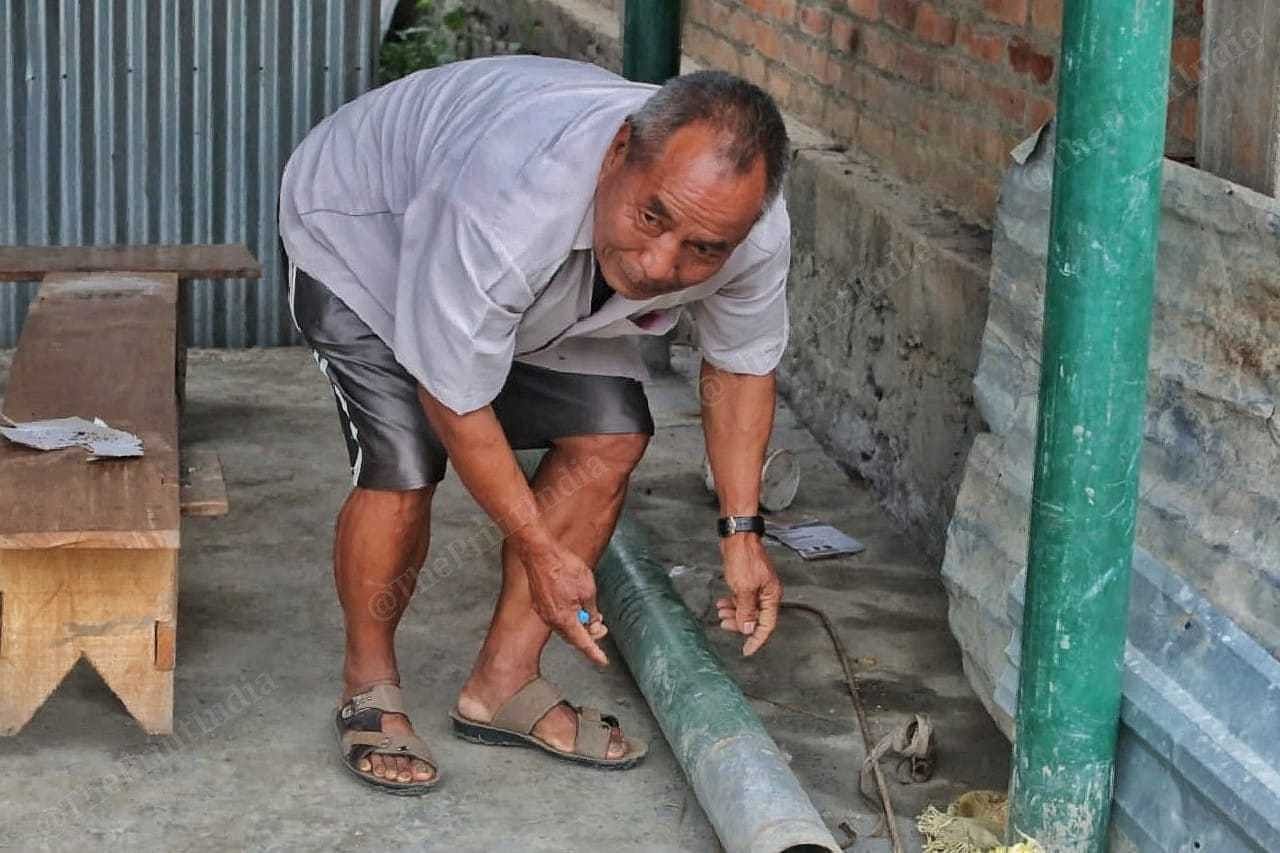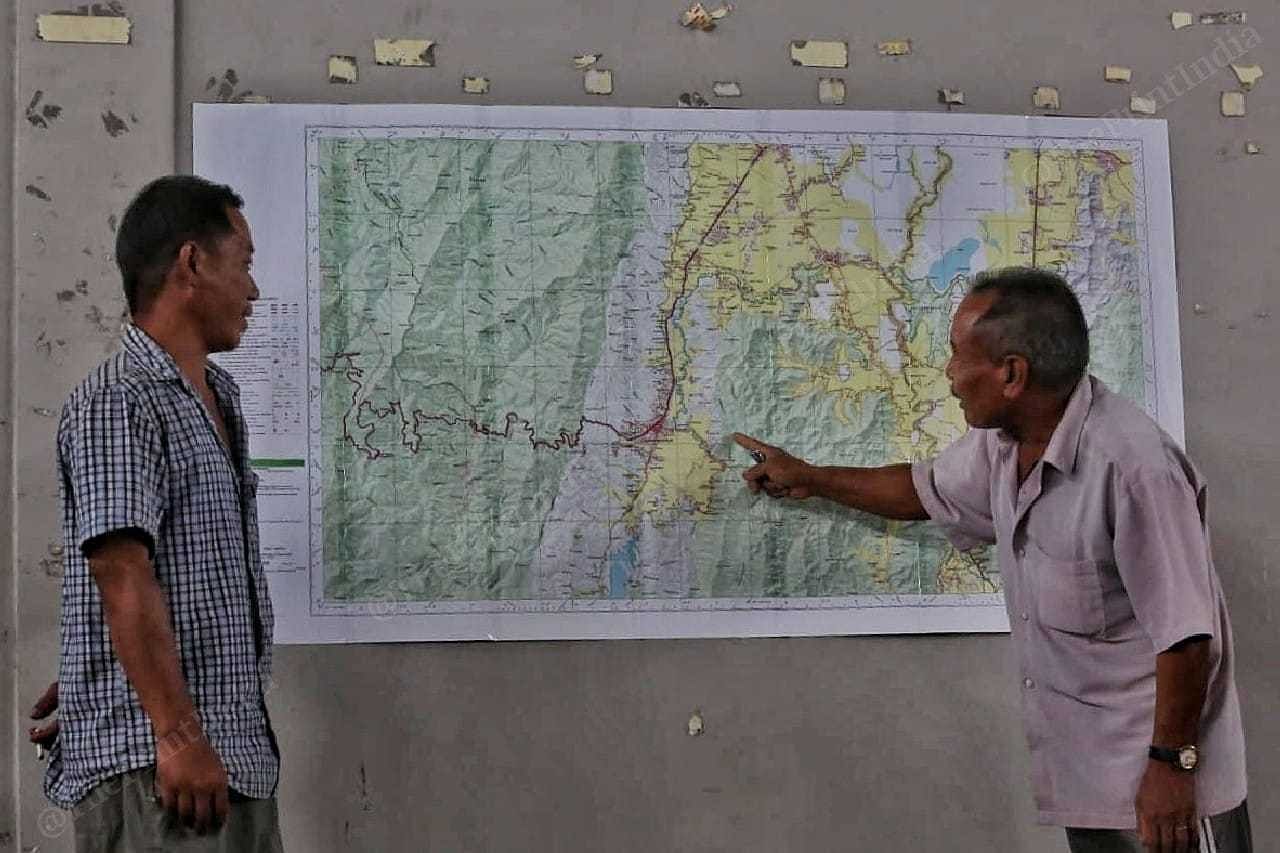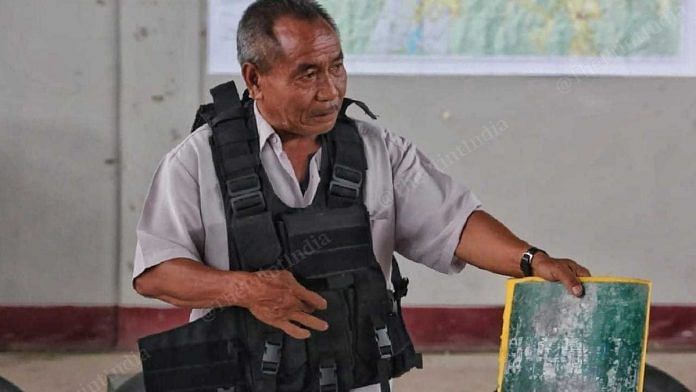Kwakta, Churachandpur: A muddy road, strewn with stones, leads to Kanaan village. Small thatched-roof houses line the road on both sides, leading to a large hall covered with tin sheets.
In one corner, a group of youngsters is diligently assembling what looks like a bulletproof jacket by pasting a sheet of sponge on an iron plank, fashioned into a shield-like shape. At the other end, two men stand before a map, deeply engrossed in strategising.
Another man in his 20s is tuning his walkie-talkie set, seemingly trying to connect with someone. Meanwhile, others are taking a break with a game of carrom. On the adjacent wall hangs a list of committee members, and a poster detailing strategy for conducting a protest.

These individuals are no military personnel in a war room. They are residents of Kanaan in the Kuki-dominated Churachandpur, serving as volunteers for the village defence committee (VDC) with the stated aim of protecting local residents amid the ongoing ethnic violence in the state.
These village defence committees exist across Manipur — even in villages in the Meitei-dominated valley of Imphal — and are set up at the community level.
They are armed, but with licensed weapons, Manipur Police told ThePrint.
The fascination with weapons, uniforms, and defence-related equipment is apparent among everyone involved. So much so that they have devised innovative methods to create their own.
To fashion their bulletproof jackets, the men carefully shape parts of non-functional iron electric poles into cylindrical forms. They slice them in half and flatten them with hammers to create shields, which are then affixed to sponge sheets of the same size. Once complete, these shields are inserted into jackets resembling bulletproof jackets, readily available in the market.

“We cannot afford to buy bulletproof jackets, but our men need them, so we have made our own,” explains George Thang, the committee commander.
“We searched for non-functional electric poles and transformed them into shields, which we are now inserting into these jackets. Each jacket weighs around four to five kilograms as the shield is placed both in the front and back,” he added, providing instructions to his team on proper techniques.
The walkie-talkies used by the committee members to be in touch with each other are the same ones commonly found in the market, often used by construction workers on job sites, George said.
To buy all the necessary equipment, the villagers have made “generous donations”. Kanaan village comprises 700 houses and a population of over 3,500 people.
“Each jacket costs approximately Rs 3,500. Additionally, there is the expense on walkie-talkies, batteries, and uniforms. The villagers have donated money generously because they know that we will protect them during this time of conflict,” George said.
Also Read: Meitei village surrounded by 6 Kuki settlements defies violence with unity — ‘we grew up together’
Crash course in arms training
The Kanaan VDC has deployed its volunteers to different “hotspots” marked on the map.

Some individuals with firearms training are kept in reserve for emergencies, while others undergo a crash course provided by former servicemen from the security forces, the residents said.
“This is a time of war. What if the enemy attacks? We must be prepared to send our men to the frontline, and that is exactly what we are doing,” Geroge said.
“We have ex-servicemen who train the boys in how to fire. We have single- and double-barrel weapons that are all licensed,” he added. “We have not acquired any arms illegally, unlike the Meiteis, who looted police armories. Moreover, this training is only being given so we are able to effectively defend ourselves.”
According to a senior police officer, it is a “defence mechanism” for the people to ensure their own safety.
“All of them hold licensed weapons and residents above the age of 20 are the volunteers who are part of these VDCs. Most villages in Manipur have established similar committees,” the officer said. “They perform day and night duties and raise their own funds to purchase whatever equipment they need.”
Since committee members are local residents, the officer said, “they usually are the first responders in times of crisis”.
“Once the police or the forces take over, they step aside. Apart from guarding their own villages, many of them also volunteer to be deployed at other villages that are facing a clash.”
‘If we’re not on duty, residents feel scared’
In the hill district of Churachandpur, each village has its own defence committee, primarily comprising young individuals aged between 20 and 30 years. The Kanaan VDC has 50 members.
While the duty hours for these young members involve patrolling the village and its boundaries from 6pm to 6 am, the older members take charge during morning hours. During clashes, however, all volunteers come together and are deployed at various locations, George said.
With incidents of violence on the rise on the fringes, these village defence committees are now expanding their ranks.
“We have started giving training to several more youngsters because this is the time we need maximum hands,” George said. “They undergo 10 days’ training on how to operate guns, how to fire. These are people who have never lifted a weapon, so it is a crash course for them to get familiar with it,” he added.
Asked about the need for these village defence committees when so many trained forces are already deployed in the area, George chuckled.
“We are the ones who will defend our land with all our might because we value it more than anyone else,” he said. “If we sit at home and rely on others to defend, it will be a disaster.”
He added that if the village defence committee is not outside, patrolling the roads, the residents of Kanaan would not be able to sleep at night.
“When we patrol the roads, they know one of their own is there to protect them from any attack. If we are not on the road, the villagers cannot sleep,” he said. “If we are not on duty, people get scared for their safety. They trust us, they have faith in us.”
(Edited by Sunanda Ranjan)
Also Read: Politics of power brought Manipur ethnic violence. Time to move to justice



